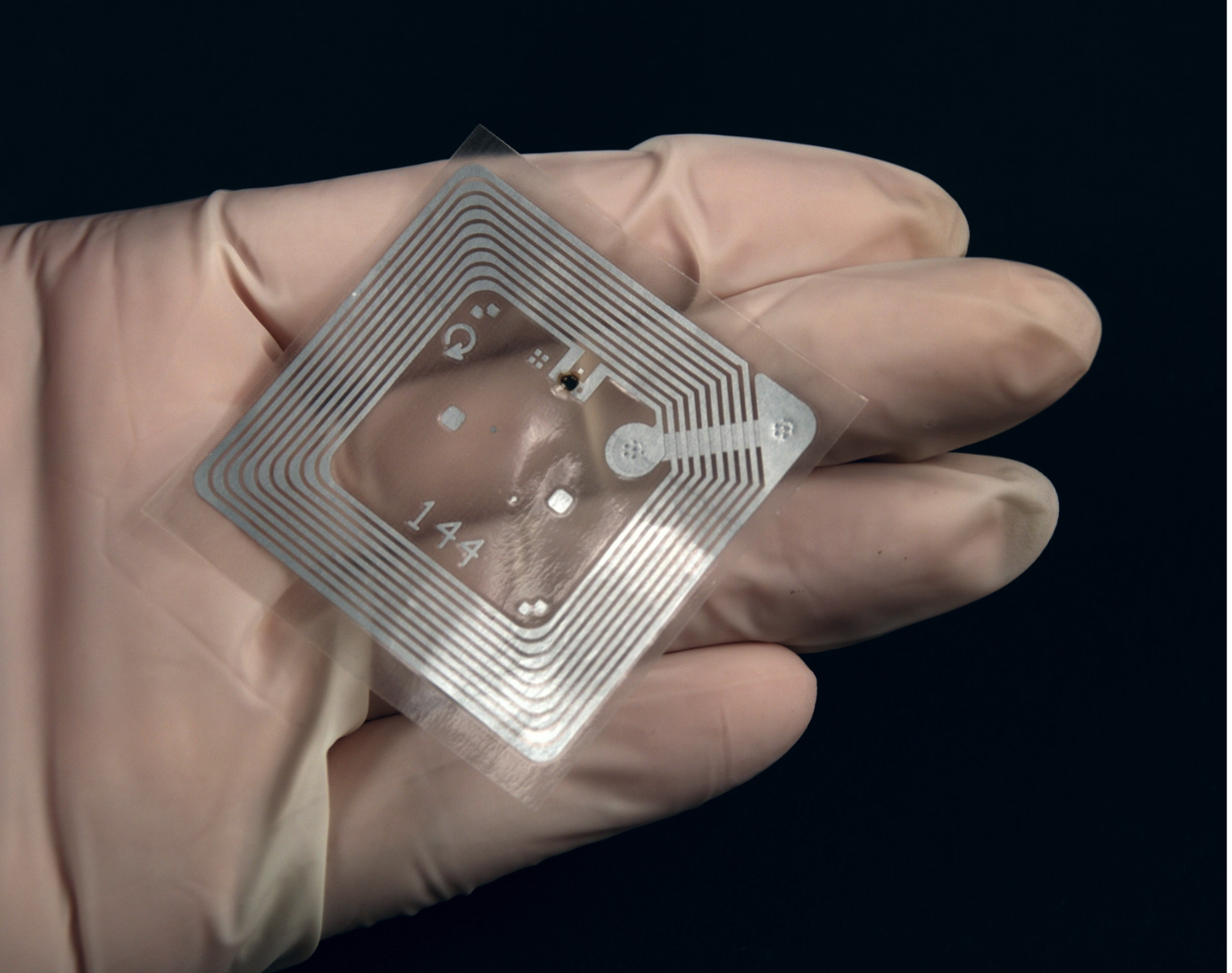How to Enhance Customer Engagement Using RFID in Retail


“How to enhance customer engagement using RFID in retail?” is a question that frequently crosses the minds of retail owners and potential customers alike. It’s a common concern in the retail industry as businesses strive to find innovative ways to connect with their customers and improve the shopping experience.
However, the answer is not always clear-cut. The landscape of retail technology is constantly evolving, and what works for one retailer might not necessarily work for another. This ambiguity can frustrate those looking to make informed decisions about adopting new technologies.
This article will explain how RFID technology can improve retail customer engagement. We want to give you a complete guide that addresses your concerns. We will cover all aspects of RFID technology, from its role in modern retail to successful implementation case studies.
We will discuss how RFID can improve inventory management, personalized shopping, checkout, and in-store navigation. By the end of this article, you will understand how RFID technology can improve your retail operations. Learn how to choose RFID solutions, build trust through data transparency, and stay ahead of trends.
We want to give you the information and tools you need to choose RFID technology for your retail strategy. This article is for both retail owners looking to boost customer engagement and potential customers curious about RFID’s shopping benefits.
The Role of RFID in Modern Retail
Defining RFID
RFID, or Radio Frequency Identification, is a technology that uses electromagnetic fields to automatically identify and track tags attached to objects. These tags contain electronically stored information that can be read from a distance. RFID systems have three main components: tags, readers, and a host system. The tags are attached to products or items; the readers capture the data from the tags, and the host system processes and stores the information.
Adoption Trends
The adoption of RFID in retail has been steadily increasing. Initially used primarily for inventory management, RFID technology has expanded its applications to include customer engagement, loss prevention, and supply chain optimization. Major retailers such as Walmart, Zara, and Macy’s have implemented RFID technology to improve their operations and enhance the shopping experience.
Enhancing Customer Engagement: The RFID Advantage
One perennial challenge in retail is maintaining accurate inventory levels. Stockouts and overstock situations not only affect sales but also diminish customer satisfaction. Traditional inventory management methods, such as manual counts and barcode scanning, are prone to errors and inefficiencies.
Solution Analysis
RFID technology offers a solution to these challenges by providing real-time inventory visibility. RFID tags can be read simultaneously and without direct line of sight, enabling retailers to track inventory with unparalleled accuracy. This level of precision ensures that products are always available when customers need them, reducing the likelihood of stockouts and overstock situations.
Impact on Engagement
Accurate inventory management directly impacts customer engagement. When customers can reliably find the products they want, their shopping experience improves, leading to higher satisfaction and loyalty. Additionally, RFID-enabled inventory systems allow for better demand forecasting and replenishment, ensuring that popular items are always in stock.
Personalized Shopping Experiences
Data-Driven Personalization
In the age of data, personalization has become a key driver of customer engagement. RFID technology enables retailers to collect and analyze data on customer behavior, preferences, and purchase history. This data can be used to create personalized marketing campaigns, product recommendations, and promotions.
Case Example
A leading fashion retailer implemented RFID technology to personalize the shopping experience. By tracking customer interactions with products, the retailer could offer tailored recommendations and promotions in real-time. For instance, if customers frequently browsed a particular brand or style, they would receive personalized discounts and suggestions related to those preferences.
Customer Perspective
From the customer’s perspective, personalization enhances the shopping experience by making it more relevant and enjoyable. Customers are more likely to engage with brands that understand their preferences and offer products that match their tastes. This level of engagement fosters loyalty and repeat business.
Streamlined Checkout Processes
Efficiency Gains
Long checkout lines and slow payment processes are major pain points for customers. RFID technology can streamline checkout by enabling faster and more efficient transactions. RFID tags on products can be read instantly, allowing for quick scanning and payment.
Customer Experience
RFID-enabled checkout systems significantly reduce wait times, making the shopping experience more convenient and pleasant. Customers can walk through an RFID-enabled checkout lane, where the tags on their items are automatically scanned, and the total amount is calculated in seconds.
Metrics
The benefits of RFID in checkout processes can be quantified through metrics such as reduced average wait times, increased transaction speed, and higher customer satisfaction scores. Retailers that have implemented RFID for checkout have reported significant improvements in these areas.
Enhanced In-Store Navigation
Technological Implementation
RFID technology can also enhance in-store navigation by providing customers with real-time information about product locations and availability. Smart shelves and interactive displays equipped with RFID readers can guide customers to the products they are looking for, improving the overall shopping experience.
Customer Journey
Imagine a customer entering a large department store and searching for a specific item. With RFID-enabled navigation, they can use a mobile app or in-store kiosk to locate the item quickly. The app can provide step-by-step directions, ensuring that the customer finds what they need without frustration.
Real-World Application
Several retailers have successfully implemented RFID-based navigation solutions. For example, a leading electronics retailer uses RFID to help customers find products in-store and check inventory availability in real-time. This technology enhances the shopping experience and reduces the time employees spend assisting customers, allowing them to focus on other tasks.
Choosing the Right RFID Technology Solutions

Market Overview
The market for RFID technology solutions is diverse, with numerous providers offering various products and services. Some of the leading RFID software companies include Zebra Technologies, Avery Dennison, 44degNorth Technologies Inc., and Impinj.
Selection Criteria
When choosing an RFID solution, retailers should consider factors such as cost, scalability, compatibility with existing systems, and support services. It’s essential to select a solution that meets the business’s specific needs and can grow with it.
Expert Recommendations
Industry experts recommend thoroughly evaluating potential RFID solutions, including pilot tests and consultations with vendors. Retailers should also seek feedback from peers and industry associations to make informed decisions.
Building Trust through Data Transparency
The Trust Factor
Building trust with customers is paramount in the age of data privacy concerns. Transparency in data usage is a critical component of this trust. Retailers must be clear about collecting, storing, and using customer data.
Privacy Concerns
Customers are increasingly aware of privacy issues and expect retailers to protect their personal information. Retailers must implement robust security measures to safeguard RFID data and ensure compliance with regulations such as GDPR and CCPA.
Best Practices
Best practices for data transparency include providing clear privacy policies, obtaining explicit consent for data collection, and allowing customers to control their data. Retailers should also regularly review and update their data management practices to address emerging threats and regulatory changes.
Case Studies: Successful Implementation of RFID in Retail
Zara
Fashion retailer Zara has successfully implemented RFID technology across its stores worldwide. The company uses RFID to track real-time inventory, ensuring that popular items are always in stock. This has led to increased customer satisfaction and higher sales.
Macy’s
Macy’s has utilized RFID technology to enhance its omnichannel strategy. By integrating RFID with its e-commerce platform, Macy’s can provide accurate inventory data, allowing customers to check product availability online before visiting a store. This seamless integration has improved the overall shopping experience and boosted customer engagement.
Challenges and Considerations
Cost of Implementation
While RFID technology offers numerous benefits, the initial cost of implementation can be high. Retailers need to invest in RFID tags, readers, and software and train staff to use the new system effectively. However, long-term efficiency and customer satisfaction gains often outweigh these initial costs.
Privacy Concerns
RFID technology involves collecting and analyzing customer data and raising privacy concerns. Retailers must ensure transparency about their data collection practices and comply with relevant data protection regulations. Building trust with customers is essential for the successful adoption of RFID technology.
Integration with Existing Systems
Integrating RFID technology with existing retail systems can be challenging. Retailers must ensure that their current infrastructure is compatible with RFID and that the transition is smooth and seamless. Proper planning and execution are crucial to avoid disruptions in operations.
The Future of RFID in Retail
The future of RFID in retail looks promising, with several emerging trends poised to further enhance customer engagement. These include the integration of RFID with Internet of Things (IoT) devices, using blockchain for secure data sharing, and advancements in RFID tag technology.
To stay competitive, retailers must adopt a forward-thinking approach to RFID implementation. This involves staying informed about technological advancements, investing in scalable solutions, and continuously innovating to meet evolving customer expectations.
Retailers that successfully integrate RFID into their operations can expect to see significant benefits in terms of customer engagement, operational efficiency, and competitive advantage. By leveraging RFID technology, they can create a seamless, personalized shopping experience that delights customers and drives loyalty.
Conclusion
This study on retail RFID consumer engagement explored RFID’s revolutionary potential. First, we covered RFID tags, readers, and the software that controls them and how they work. This technology improves inventory management and personalizes shopping by creating a unique, interactive environment.
RFID can track customers’ preferences and habits to help businesses personalize shopping experiences. Shoppers are more engaged and satisfied when stores use data to personalize marketing and product recommendations. RFID prevents stockouts and overstocking by improving inventory management and keeping popular items in stock and customers happy.
RFID excels at checkout. RFID technology automates item scanning, reducing checkout times and errors. RFID-enabled interactive in-store displays provide real-time product information and personalized recommendations, improving the shopping experience.
However, RFID implementation faces challenges. Consider upfront costs and privacy. Retailers must be transparent about data collection and follow data protection laws to build customer trust.
RFID may have more advanced retail uses in the future. When combined with IoT and AI, RFID technology will improve operational efficiency and customer engagement.
Working with an RFID expert like 44degNorth can benefit retailers. 44degNorth specializes in merchant-specific RFID technology. Retailers can use their knowledge to overcome RFID integration challenges and fully implement the technology.
Ready to transform your retail operations and enhance customer engagement with RFID technology? Contact 44degNorth today to discover how our RFID solutions can drive your business success. Visit our website or call us to schedule a consultation and take the first step towards a more interactive and efficient retail experience.
Dial Now: +1 (647) 937-9080
Email Us: innovation@44degnorth.tech
FAQs
How does RFID improve inventory management?
RFID provides real-time data on inventory levels, reducing the chances of stockouts and overstocking. This ensures that customers can always find the products they need, enhancing their shopping experience.
What are the main components of an RFID system?
An RFID system comprises RFID tags, RFID readers, and software that processes the data. These components work together to capture and analyze data, providing valuable insights for retailers.
Can RFID technology help reduce checkout times?
Yes, RFID can streamline the checkout process by allowing for the automatic scanning of items, reducing wait times, and minimizing human errors.
Are there privacy concerns associated with RFID technology?
Yes, the use of RFID involves collecting customer data, which raises privacy concerns. Retailers must be transparent about their data collection practices and comply with relevant data protection regulations.
What are the costs associated with implementing RFID in retail?
The initial costs of implementing RFID include investing in tags, readers, and software and training staff. However, the long-term benefits often outweigh these initial expenses.
What is the future of RFID in retail?
The future of RFID in retail includes advancements in data analytics, tag readability, and integration with IoT and AI, which will further enhance customer engagement and shopping experiences.
